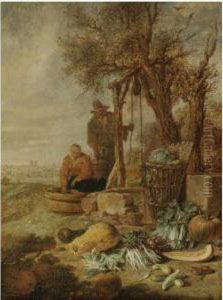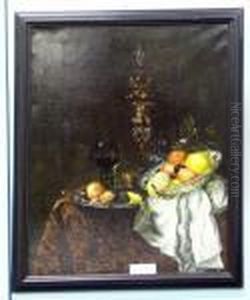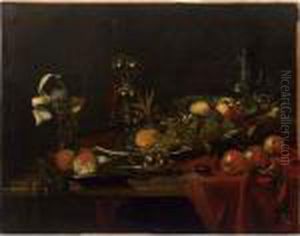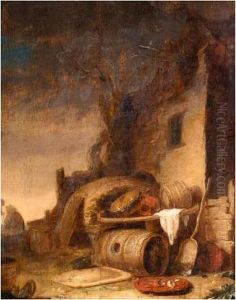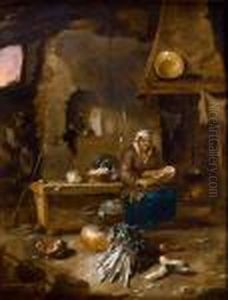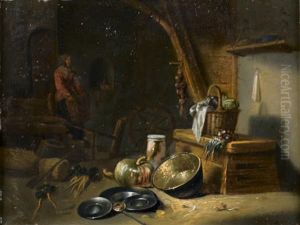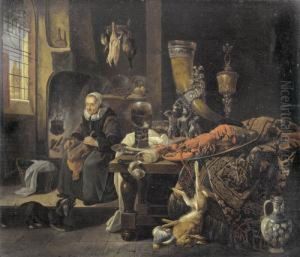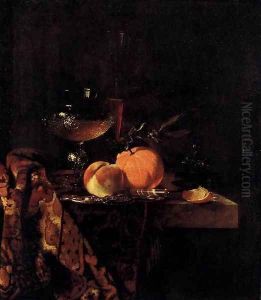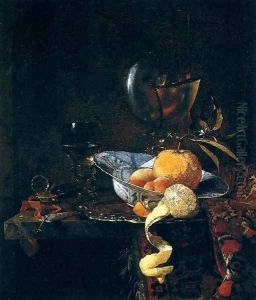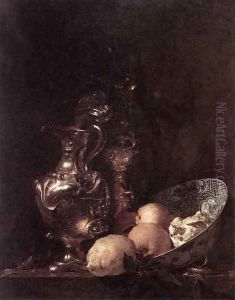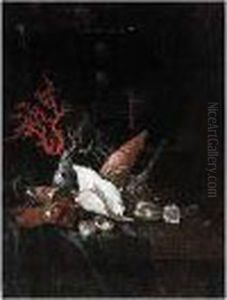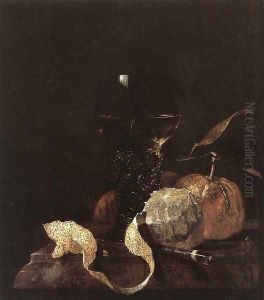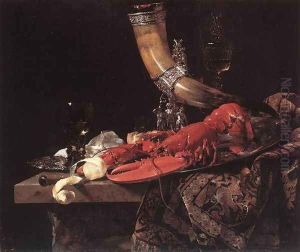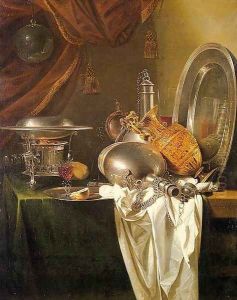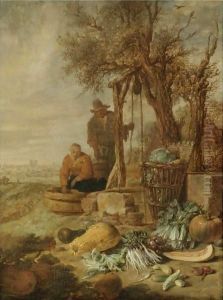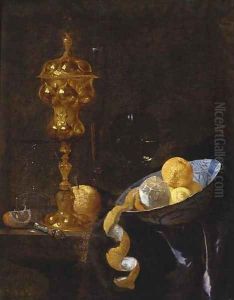Willem Kalf Paintings
Willem Kalf was an eminent Dutch still-life painter known for his richly decorated works and the use of light. He was born in Rotterdam, the Netherlands, in 1619. Coming from an affluent family, Kalf was able to pursue his passion for art, although the details of his early training are not well documented.
It is believed that Kalf traveled to Paris in his early 20s, where he lived and worked for about six years. During his time in Paris, he was influenced by the works of Flemish artists and the local still-life painters. In 1646, he returned to Rotterdam, and by 1653 he had settled in Amsterdam, which was then the commercial and artistic hub of the Dutch Golden Age.
In Amsterdam, Kalf's work began to flourish. He transitioned from his earlier, more rustic kitchen and market scenes to the more opulent and refined still lifes for which he is best known today. These works often depicted expensive and luxurious objects such as crystal, silverware, glassware, and Chinese porcelain, alongside fruits, nuts, and other textures. Kalf was a master at capturing the interplay of light and shadow, and his paintings are celebrated for their intricate detail and rich, warm tones.
His works became highly sought after by wealthy patrons, and Kalf enjoyed considerable success during his lifetime. Despite this, little is known about his personal life, as he left behind no writings and few personal records.
Willem Kalf passed away in Amsterdam in 1693. Today, his paintings can be found in numerous prestigious museums around the world, and he is considered one of the foremost still-life painters of the 17th century.

